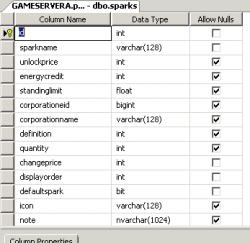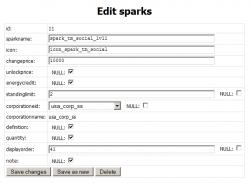It’s been a little more than a month since we’ve launched on Steam, and we’re closing in on 2 months past our payment model change, so it’s high time to do a quick assessment on where we stand, and where we’re going.
Fresh blood
The best news I can tell you is of course that our playerbase received a much needed boost, thanks to our parting with the subscription model, and the huge visibility that Steam provides.
We’ve hit the 600 mark with the online player count on a recent weekend and our average player count is roughly 5 times as before. Of course this is a tiny amount if you compare Perpetuum to other online games, but I have to remind you that we’re still in Early Access so people are wary to join. Also, as we have stated before, we’ve chosen the path of a slow growth instead of spiking it, so it’s all pretty much going according to our plans. We didn’t have any server issues that can be attributed to online player numbers so far either, which is another good sign.
I don’t have the freedom to tell you actual financial data, but it should be enough to say that after months (years?) of worrying about what to put on your plate tomorrow, it’s a liberating feeling to have that off of the list of things to worry about, and being able to just focus on making the game better.
A new home
We have already started to put those financials to good use, so beyond the company-issued Ferraris (by which we mean a second portion of ramen), we have found a brand new hosting location for our game servers.
As you probably know, the Perpetuum server cluster (if you can call 3 machines a cluster) is currently located in Budapest, Hungary. This is of course quite optimal for us, but very sub-optimal for most you, as we are hardly what you could call the center of the interwebs. My support ticket inbox is always full of reimbursement requests related to lag and disconnections, and most of those can be probably attributed to various network and routing issues.
So after doing the necessary research and inquiries, we have decided to move the servers to a prominent datacenter in Amsterdam. Though technically we’re not moving the machines themselves, but rather renting new ones on location, since we’re very fond of the idea of not having to send in Gargaj to switch a faulty HDD in our self-maintained hardware. To Amsterdam.
Without going into too much technical detail for now, compared to the current mixed-role 3-server configuration, the new setup will consist of 5 core machines: 1 server for handling player traffic (logins and zone jumps), 1 dedicated machine for the SQL database, and 3 dedicated machines for hosting the islands, split down between the 3 main factions.
Paperwork and technicalities are still in progress, but if things go as planned, you’ll be able to test the new servers within a month.
The near future
Let’s have a look at the things that we’ll be focusing on in the coming months. Some of these will be done in parallel, but the general order is something like this.
Gamma revamp
With the closing down of gamma islands a huge chunk of the game content has been temporarily removed, so this is our top priority right now of course - we know that you guys are preparing for the mother of all wars when gammas open up again. We are using our public test server to try out all the new mechanics and limitations that we need to implement to make it all work again.
We’re taking our time with this because obviously nobody wants another gamma wipe a year from now, and we are grateful to everyone who aids us with valuable feedback and actual testing. More info on the progress of this is coming soon to the relevant testing forum topic.
Quality-of-life improvements
Gargaj is on fire, and we have received an overwhelmingly positive feedback on the small QoL improvements like the autopilot, the storage search, and the many small UI-related changes. We’ll continue on this road, so you can definitely expect more of these.
Assignment system revamp - Stage 2
After Gamma is back up, we’ll jump right into doing some long-awaited PvE love: the revamp of the assignments. It’s been a while since we announced this, but better late than never.
As you might remember, the second stage is about making the assignments themselves random. We’ll be using an assignment template system where we only set what type of objectives you need to do, but the exact enemy you need to kill, or the item you need to acquire, or the mineral you need to mine will be all randomly selected from a pool of nearby locations, so your chances of seeing the exact same assignment twice will be quite low.
Not only that, but we’ll also seed the islands with many small assignment terminals that you’ll be able to use while on the terrain, so you can spare the long walks back and forth to the main terminals just to request or deliver an assignment.
Robot paint system
We have already deployed the foundations of the paint system in a recent patch (you probably noticed because most of the robots received a white color due to a bug).
The coloring system will be definitely not just some “pick a color and be done with it”-thing: we’ll have paint items that you can either gather or manufacture and then mix them together to get the final color for your robot; so basically fully integrate the painting frenzy into the industry and market economy.
Teleport and highway network revamp
The topic of long walks is still one of our most discussed issues, and one of the many reasons behind it is the current haphazard teleport and highway system layout. Although we don’t plan to make groundbreaking changes to the teleport network itself, our basic concept for the change is that you should be able to travel between every teleport and terminal/outpost without stepping off of a highway, ever. If you’ve seen the Virtual Training Island, that should be a good indicator of our general direction with this, but we’ll try to even top that.
Balancing changes
DEV Alf is back from the dead too, so you can expect some balancing changes too. He has already jumped into a hot topic right now: the balance of signal detectors and electronic warfare in general.
Steam trading and market integration
This is something that we still need to do some research on, but I’m putting it here because we plan to do it sooner rather than later. As you probably know, several games have items that can be traded via the Steam economy already. The general idea is that first you would be able to trade ingame items via Steam, for example your Gropho Mk2 for some trading card or another Perpetuum originated item.
The ultimate goal however is that we’ll also hook up Perpetuum to the Steam community market, where you’ll be able to sell and buy ingame items for Steam wallet funds. We’re approaching this very carefully of course - it could be a large boost to the ingame economy, but things could also go wrong with it.
The not-so-near future
We’re quite aware that the graphics of the game are starting to look dated. Unfortunately the current engine architecture has also become dated, so this is not simply a question of putting in higher resolution textures and models. The engine requires a major rewrite for any significant upgrades.
Not to mention the GUI - one of the most frequent complaints we hear is about the small size of the ingame fonts. This is also something that’s very hard to fix currently, since the interface is pretty much hardcoded and not “stretchy”. Text with larger fonts would simply overflow outside of the UI elements, and we’d need to have a completely separate, differently sized interface for that to work - and we’d rather put that effort into a new and advanced interface engine that will work for all display sizes without compromise.
For these reasons we’ve been working on the foundations of a completely new client but as you might guess this is not a simple task. At this time we’re still pretty far from replacing our current client, but work towards this goal has been going on behind the scenes for the last year and a half now.
Our first goal here is to get basic functionality going (glorified chat client woo!), which would work as a proof of concept for the new interface engine. Once that’s satisfying enough, we’ll move on to the 3D engine itself. With the new interface tech we developed, the implementation of a new client should go a lot faster than before. Regarding a timeframe, we hope to have something to show later this year, at the very least a partially functional test of the new interface engine.
Conclusion
This year marks the 10th year of Perpetuum development, and after an admittedly quite awful last year - which no doubt you noticed as well - the Steam launch has been one of the most important things that happened to the game. We’re adamant on riding this wave and focusing on making a better gaming experience for everyone, which is an easy thing to say, and it’s equally easy to be sceptic about it, but here’s the thing: This project is important to us - and we’ll act accordingly.














